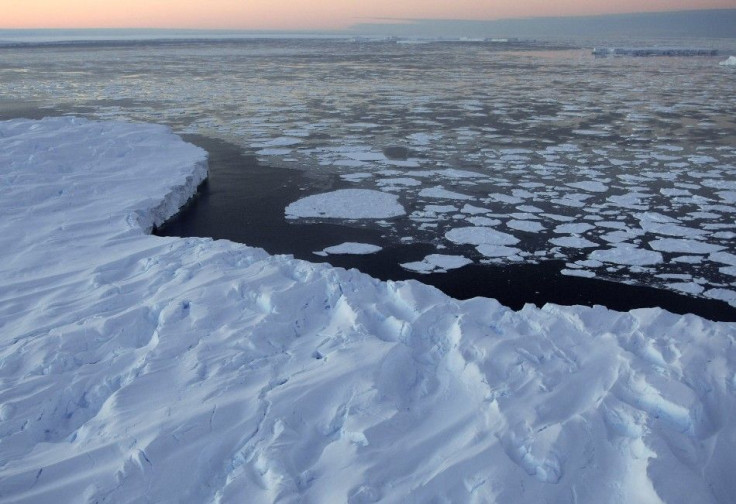Japan Earthquake, Tsunami Snaps Antarctic Icebergs [VIDEO]

NASA scientists were able to observe for the first time the powerful effects of an earthquake and tsunami, which broke off large icebergs a hemisphere away off the coast of Antarctica.
The tsunami that struck Japan on March 11 produced waves that hit an ice shelf in Antarctica 13,000 kilometers (8,100 miles) away, smashing parts of it into huge icebergs, the European Space Agency said Tuesday.
Kelly Brunt, a NASA cryosphere specialist at the Goddard Space Flight Center in Greenbelt, Md., and colleagues were able to link the calving of icebergs from the Sulzberger Ice Shelf in Antarctica following the Tohoku Tsunami, which originated with an earthquake off the northeast coast of Japan.
When the massive earthquake triggered the Tohoku Tsunami, swamping entire coastal towns and killing nearly 16,000, scientists knew that tracking the wave could provide visual proof of the connection.
"In the past we've had calving events where we've looked for the source," Brunt said. "It's a reverse scenario - we see a calving and we go looking for a source. We knew right away this was one of the biggest events in recent history - we knew there would be enough swell. And this time we had a source."
The undersea megathrust earthquake had a staggering magnitude of 9.0 (Mw), and triggered waves of up to 133 feet high. Scientists were able to track the wake over 8,000 miles as it sprawled through the Pacific and Southern oceans.
Just 18 hours after the tsunami, a wave of 1-foot height struck the ice shelf in Antarctica. The 260-foot-thick Sulzberger ice shelf extends towards New Zealand. It hasn't budged in nearly 50 years, but the pressure from the wave was strong enough to snap off massive pieces of ice. One of them measured four by six miles in surface area, nearly the size of Manhattan.
Satellite imagery enabled scientists to see the "calving," or break off of the iceberg, proving that seismic events can certainly lead to other effects across the globe.
Watch video of the action below:
© Copyright IBTimes 2024. All rights reserved.





















